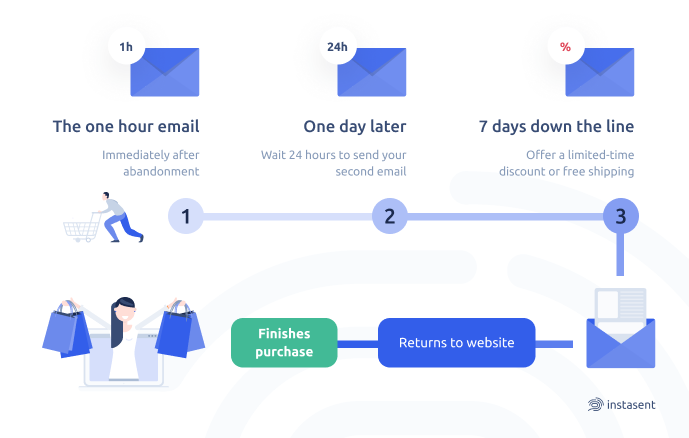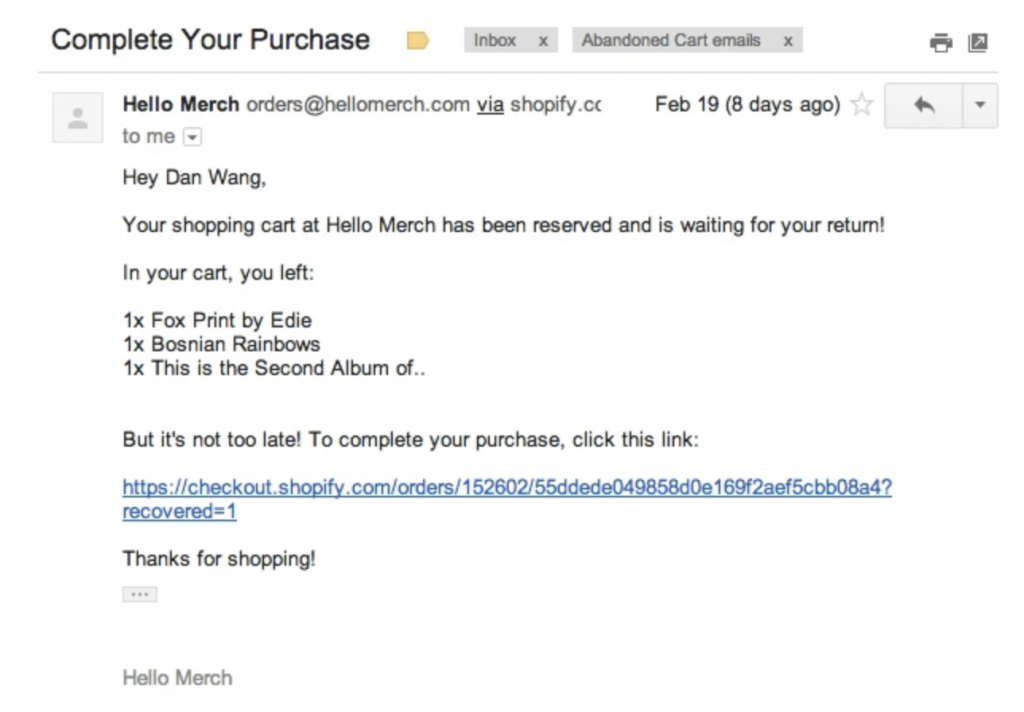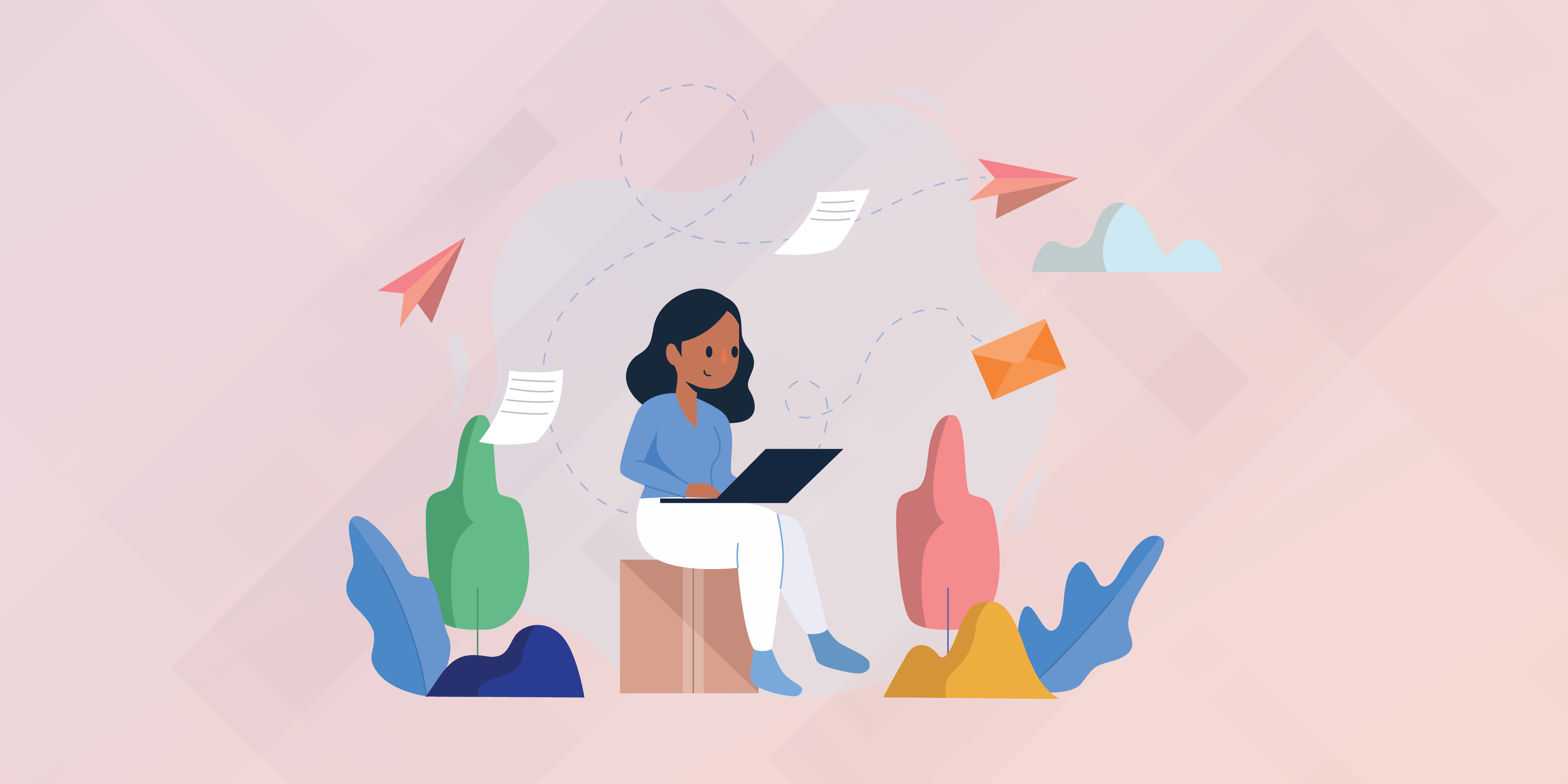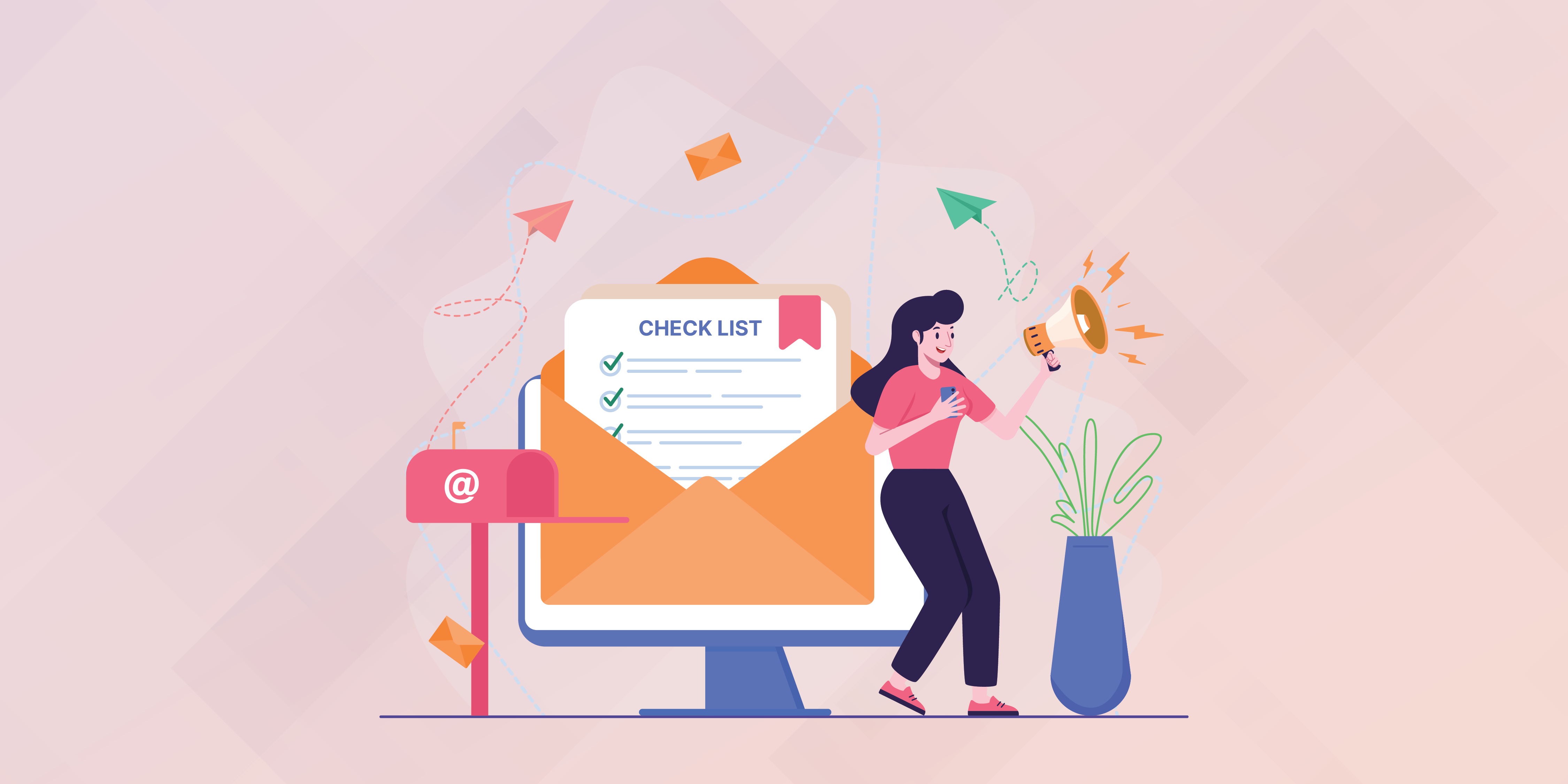
Let’s imagine that you look at a pair of jeans online, then move on without making a purchase. For the rest of the day, you see advertisements for those jeans on social media, the websites you browse, and you even receive an email in your email inbox.
You’ve just experienced retargeting in action.
Retargeting allows advertisers to serve ads to consumers who have demonstrated an interest in a product or service. The concept of remarketing is to re-engage with these consumers and try to get them to enter the conversion funnel again. It helps your business maximize its marketing budget and boosts every aspect of your marketing strategy.
This guide will walk you through retargeting and how to use it to increase revenue.
Email retargeting involves sending emails to subscribers based on the way they engage with your digital properties. When a consumer visits your site and takes action, it triggers an email response. That response gives you a second shot to engage and convert this customer.
There are many types of email retargeting campaigns you can run. One of the most common forms of email retargeting is the abandoned email cart sequence. The image below reveals how an email abandonment sequence works.

Source: Instasent
According to digital marketing experts, retargeting is one of the most effective ways to convert consumers. Retargeting emails have high open rates, click-through rates, and conversion rates. For example, out of 100 people who get a cart abandonment email, close to 11 consumers eventually make a purchase:

Source: Cloudfront
Why are retargeting emails so effective in increasing sales?
It’s highly likely that they work because the typical recipient of a retargeting email was already halfway through an action and just needed a nudge to get them to continue the transaction. When you remind people that you’re still around, they’re more likely to remember you. This principle is also applicable to eCommerce transactions.
Email retargeting is a must-have tool in your overall digital marketing strategy. Before you start crafting your email retargeting strategies, keep the following best practices in mind.
Start by segmenting your mailing list into smaller homogenous lists based on variables like browsing patterns, products viewed, and buyer needs. Segmenting your mailing list ensures that your retargeting message resonates with the audience while giving the message a personalized context.
You may start by considering the products that your audience views. Which ones are the most common, and which price ranges are the most prominent? You may go even more profound and segment the overall audience based on variables like demographics, preferences, incomes, and shopping habits.
Your social account and web analytics are first-time rich sources of data that you can use. Google Analytics, for example, provides a basic dashboard that will give you a rundown of your visitors based on criteria like location, interests, and demographic data. It also gives you the ratio of returning and new visitors.

Similarly, the method of dividing your emailing list into customized and homogenous lists is called email segmentation. Email segmentation allows you to specifically target people who are searching for deals on your products and services.
You can also build buyer personas and customize your offers based on these personas. A buyer persona is a semi-fictional sketch of your target audience. It is based on their demographics, needs, and behavioral traits. The sample buyer persona below includes data such as age, location, personality, goals, and frustrations:

Source: Design Research
Using buyer personas, you can create messages that resonate with your audience, help them achieve their goals, and address their common pain points.
While your email marketing probably uses a set of email templates, personalizing your emails will increase reader engagement and allow you to stand out from the crowd. They make the recipient feel like the message is sent exclusively for them.
Let’s look at a few more benefits of custom email marketing.
Personalization starts with addressing the viewer by name. Addressing your readers by their name lends an engaging and friendly touch to your message.
Sending emails in response to a customer's behavior enables you to nurture them along the conversion journey. If they fall off the radar, you can re-engage them using behavior prompts.
Behavioral emails assist you with understanding your customers' needs at all stages of the customer journey. Regular mail campaigns help in maintaining brand recall.
However, you should be careful not to hard-sell your solutions all the time. Instead, you should send them content that addresses the issues they face. For example, if you’re selling project management software, you don’t just send your subscribers updates about your product. You should also send them helpful articles about project management best practices.
While you do so, you need to keep the messaging of each email relevant to your brand. You may highlight product features that help the readers take action on the information they’ve just received. It doesn’t have to be text-based all the time - adding images, email countdown timers, and videos to your emails helps increase engagement and conversion rates.
Cart abandonment refers to customers who added products to their shopping cart but suspended the transaction before check out. If you could recover even a small percentage of your customers’ abandoned cart, it would drastically increase your revenue.
There are a variety of reasons why people abandon a shopping cart.

Source: Amazon
By addressing these common pain points in your cart abandonment emails, you can get your customers to recover their abandoned shopping carts and pick up where they left off.
Cart abandonment emails focus on recovering the missed revenue by persuading a buyer to complete the checkout process. In most cases, these emails are automated, and a standard sequence of emails is sent to the consumer.
Abandoned cart emails provide more than just a boost in sales. They can also help your brand in the following ways:
Cart abandonment may not always be product or brand-centric. A simple problem with their internet service may have triggered it. The customer could still be interested in completing the checkout. The simplest way to target these customers is by providing a link to their abandoned cart.
Consider this Hello Merch example. It's a straightforward message informing the customers of their decision. Better still, it provides a connection that allows them to quickly return to their cart without having to re-enter the information on the login tab.

By giving your users a way back to completing your purchase, you don’t just recover what would otherwise be lost revenue. You get another opportunity to establish a long and beneficial relationship with a loyal customer.
Sending consumers emails with offers you know they'll want is another way to encourage them to buy from you again. This is where product-related email comes in handy.
Notifying customers about relevant offers and promotions, which was perhaps popularised first by Amazon, is used by most eCommerce brands to communicate with customers and encourage them to return to buy more items.

Source: WisePops
When you send your customers product emails, you need to remember that they are at various points of the buying process, which means that each customer will respond differently to your emails.
For example, a unique discount code is a great way to generate the first sale or engage a repeat customer. By offering regular benefits to your subscribers, you increase the chances of your customers turning into brand advocates. Either way, you first need to establish a good relationship with your subscribers.
Monki understands the importance of a good start. They give you this email soon after you subscribe to their newsletter:

Source: SleekNote
It's essential to keep your customers updated on new offers with relevant product emails too. For instance, you can send emails about offers based on recent browsing or purchase history.
I’m sure you receive a lot of promotional emails every day. Many of them come from businesses you hardly remember interacting with. Your subscribers probably face the same situation: hundreds of emails that stay unread, including emails coming from your business. How do you get your inactive subscribers to engage with you again?
You need to go the extra mile to stand out from the crowd. Sending out personalized re-engagement emails to your "inactive" subscribers is one strategy to re-engage them.
The email lifecycle is incomplete without re-engagement emails. According to Marketing Sherpa, businesses lose up to 25% of their email list every year. Hence, list retention should be a top priority for your email marketing strategy.
Re-engagement emails, when handled correctly, will lower list turnover and increase incremental engagement. Re-engaging inactive subscribers will help you maintain, if not improve, inbox residency privileges in terms of deliverability.
So, what makes a good re-engagement email? Let us look at some examples of how other businesses implement re-engagement campaigns.
Grammarly uses a "Secret" badge to re-engage inactive subscribers. Users are enticed to use their service again by the prominent CTA button "GO." At the bottom of the email, they even advertise their paid edition and hint at a Grammarly discount.

Grammarly’s approach works because people like badges. This concept is called “gamification”, and you can use it to reward subscribers who maintain a certain level of engagement or product use.
Urban Outfitters' re-engagement email is the right combination of wit and sentiment. It's in line with their name and branding, and it'll most definitely stand out from other companies’ marketing emails.

Source: Movable Ink
The email mimics an SMS conversation with an ex-lover, right down to the part where the ex bargains for another chance. It’s a conversation most of us have experienced before, and Urban Outfitters’ audience is all too happy to give their engagement another go.
Some inactivity among your subscriber base is unavoidable. It all boils down to the level you manage to contain it to. Take advantage of these re-engagement email ideas to test new services and tactics and see how you can re-engage old clients and generate additional revenue.
Retargeting emails based on behavioral patterns are a powerful tool for increasing sales. This kind of email retargeting sends contextually important messages straight to your customers' inboxes, where they're more likely to be read.
In this blog post, we looked at a few different behaviors that can cause email retargeting. In addition, we've outlined the best email retargeting tips that you can use. Measuring and analyzing your performance will help you maximize the results of your retargeting campaigns.
Sania Khan is a content creator who has been writing for the past seven years. A content marketer by day and a poet by night, she previously worked for a large multinational and left it to pursue her passion for writing. She enjoys a good read with wit and tea to get her day started.
Tags:

M. Usama
April 19, 2024

M. Usama
April 19, 2024

M. Usama
April 18, 2024